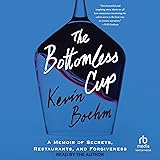The journey of milk, from a farm animal to a staple in refrigerators worldwide, represents a sophisticated convergence of agricultural science, food technology, and rigorous quality control. Understanding the intricate processes involved provides valuable insight into the dairy industry’s commitment to delivering a safe and nutritious product. As elaborated in the accompanying video, the large-scale production of milk involves numerous precise steps designed to ensure both purity and longevity.
Globally, over 6 billion individuals consume milk and its derivatives, accounting for approximately 75% of the world’s population. This substantial demand necessitates an equally robust supply chain, with the United States alone producing an astounding 100 billion liters of milk annually. This immense volume underscores the critical need for efficient and hygienic processing methodologies.
Cultivating Quality: The Dairy Farm’s Role in Milk Production
The foundation of premium milk production begins on specialized dairy farms, where bovines are selectively bred for their lactational capabilities. These animals reside in meticulously maintained environments, ensuring their optimal health and minimal stress levels. Farmers recognize that a cow’s well-being directly correlates with its milk yield and quality.
Modern dairy cows are typically milked two or three times daily, utilizing advanced milking machines. These devices are engineered for gentleness and efficiency, safeguarding the cow’s comfort during the extraction process. An individual cow can produce anywhere from 25 to 35 liters of milk each day, a testament to the biological efficiency cultivated through selective breeding and optimized husbandry.
Advanced Milking Operations and Initial Chilling
Large-scale dairy operations frequently incorporate rotary parlors, a highly automated system capable of milking 20 to 80 cows simultaneously. This innovative technology significantly enhances operational throughput and efficiency. Raw milk then immediately flows through hygienic stainless steel or food-grade glass pipes into refrigerated bulk milk tanks, where its temperature is swiftly reduced to approximately 4° Celsius.
This rapid cooling is a crucial initial step, inhibiting bacterial growth and preserving the milk’s integrity post-extraction. Maintaining this precise temperature is paramount until the milk reaches the processing facility. Imagine if this crucial initial chilling step were omitted; the rapid proliferation of spoilage microorganisms would render the milk unsuitable for consumption almost immediately.
The Critical Journey to Processing Facilities
Following the on-farm chilling, specialized refrigerated bulk tank trucks collect the raw milk from various dairy farms. These vehicles are integral components of the cold chain, ensuring the milk’s consistent temperature during transit. Prior to transferring milk from a farm’s tank, the driver meticulously collects a sample, assesses its flavor and temperature, and accurately records the volume. This rigorous inspection serves as an initial quality checkpoint.
Given milk’s highly perishable nature, dairy farms and processing facilities are strategically located in close geographical proximity. This minimizes transit times and further mitigates any potential temperature fluctuations or bacterial proliferation. Such logistical efficiency is a hallmark of modern dairy supply chains.
Transforming Raw Milk: Inside the Processing Plant
Upon arrival at the milk processing plant, the truck’s contents are accurately weighed and then pumped into large, refrigerated holding tanks within the facility. This transfer occurs through flexible stainless steel or food-grade plastic hoses, maintaining the cold chain. The subsequent stages involve a series of sophisticated mechanical and thermal treatments.
Initially, the cold raw milk passes through either a clarifier or a separator. Both machines employ centrifugal force, spinning the milk through a series of conical discs within an enclosed system. A clarifier primarily removes extraneous debris, certain bacteria, and any sediment present in the raw milk, enhancing its purity. Conversely, a separator performs these tasks while also separating heavier milk fat from lighter skim milk, yielding distinct cream and skim milk products.
Some advanced processing plants utilize a standardizer clarifier, which precisely regulates the milk fat content by removing only excess fat. This enables the production of various milk types, such as 2% or 1% milk, meeting diverse consumer preferences. The extracted excess milk fat is subsequently processed into other valuable dairy products, including cream or butter, demonstrating the industry’s commitment to maximizing resource utilization.
Fortification: Enhancing Nutritional Profiles
Following clarification or separation, the milk undergoes a fortification process, involving the precise addition of specific minerals and vitamins to augment its nutritional content. This critical step is often implemented to address common dietary deficiencies within a population or to align with specific nutritional guidelines. For instance, Vitamins A and D are commonly added to milk.
A peristaltic pump, renowned for its accuracy and controlled dispensing capabilities, automatically introduces the correct amount of vitamin concentrate into the flowing milk stream. This ensures uniform distribution throughout the product. Imagine a scenario without fortification, where critical nutrients might be lacking in commonly consumed food items, potentially impacting public health.
Pasteurization: The Legacy of Louis Pasteur
Once fortified, the milk, whether whole, skim, or standardized, is piped into a pasteurizer to eliminate potentially harmful bacteria. This revolutionary process was developed by Louis Pasteur, the esteemed French scientist, who originally conceived it to prevent wine from souring into vinegar. Later, its broad applicability for eradicating harmful microorganisms in various food products, including milk, was recognized.
Several methods exist for pasteurizing milk, with the High-Temperature, Short-Time (HTST) process being the most prevalent. In this continuous flow system, milk is rapidly heated to a specific temperature for a brief duration. For whole milk, skim milk, and standardized milk, the standard requires heating to 72°C for 15 seconds. Different milk products, however, necessitate distinct time and temperature parameters tailored to their unique compositions.
The heated milk travels through a precisely sized pipe, engineered so that the liquid takes exactly 15 seconds to traverse its length. A sophisticated temperature sensor positioned at the pipe’s outlet continuously monitors the milk’s temperature. Should the temperature fall below the required standard, the system automatically diverts the milk back to the inlet for reprocessing, preventing the release of inadequately pasteurized product. This fail-safe mechanism underscores the robust quality control embedded in modern dairy operations.
Homogenization: Ensuring Uniformity and Stability
Raw milk naturally contains fat globules that, over time, tend to rise to the surface, resulting in cream separation. To counteract this phenomenon and ensure a consistent product, milk undergoes homogenization. This process mechanically reduces the size of the remaining milk fat particles, preventing them from coalescing and separating as a cream layer.
The hot milk, freshly pasteurized, is subjected to immense pressure, typically between 2,500 and 3,000 psi (17,200-20,700 kPa), by a multiple-cylinder piston pump. It is then forced through extremely small passages within an adjustable valve. The intense shearing effect generated by this high-pressure flow fragments the fat particles into a uniform, minuscule size. Subsequently, the milk is rapidly cooled back to 4° Celsius to preserve its delicate flavor profile.
Specialized Processing: Creating Powdered Milk
The production of powdered milk involves an additional, specialized step before packaging. Initially, the milk is concentrated to significantly increase its solids content. This is primarily achieved through the evaporation of a substantial percentage of its water content, resulting in a more viscous, concentrated liquid. This concentration process is critical for subsequent drying efficiency.
After concentration, the milk concentrate is subjected to spray drying, a sophisticated process that transforms the liquid into fine powdered milk. The concentrated milk is first atomized, broken down into tiny droplets by spraying it through a high-pressure nozzle into a specialized drying chamber. Hot air is simultaneously introduced into this chamber, causing the water within the droplets to evaporate rapidly. As the water dissipates, the remaining milk solids coalesce into tiny, dry particles. These particles descend to the chamber’s base, where the dried powdered milk is collected, ready for packaging.
Packaging and Distribution: The Final Stages of Milk Production
Once processed, the milk is meticulously packaged into various containers, including cartons, plastic bottles, or jars for powdered varieties. The history of milk packaging itself is rich, with Dr. Henry Thatcher patenting one of the first glass milk bottles in 1884. His innovation stemmed from observing unsanitary milk delivery methods, highlighting an early industry focus on hygiene. By 1889, Thatcher’s “Common Sense Milk Jar” had set an industry standard.
Packaging operations are conducted under stringent hygiene protocols to prevent any potential contamination. Throughout the entire milk production process, rigorous quality control measures are continuously implemented. These include comprehensive testing for bacterial contamination, verification of proper pasteurization, and ensuring the milk complies with all regulatory standards for its various components. Compliance is crucial for classification, as approximately 90% of milk produced in the United States achieves Grade A status, signifying its suitability for direct consumer consumption.
Should milk fail to meet these stringent Grade A standards, it is classified as Grade B and is typically restricted to the production of certain cheeses, which undergo further processing that eliminates potential contaminants. The pinnacle of sanitary conditions is represented by certified milk, a premium product sold at a higher price due to its exceptional quality assurance. To maintain these impeccable conditions, the inner surfaces of all processing equipment and piping systems are thoroughly cleaned daily.
Advanced, highly automated Clean-In-Place (CIP) systems are integrated into stainless steel equipment throughout both the processing plant and farms. These systems allow specialized solvents to be circulated through the entire network, followed by a thorough rinse, all performed between normal milk influx from the farms. This proactive approach to sanitation is indispensable for preventing cross-contamination and ensuring product safety.
Post-packaging, the milk enters the final phase of its journey: distribution to retailers via a meticulously managed cold chain. Refrigerated trucks are exclusively employed to transport milk, ensuring it maintains its optimal temperature from the plant to the store shelves. This unbroken cold chain is vital for preserving freshness and extending shelf life. Upon reaching retail outlets, consumers can purchase commercially produced milk in a diverse array of forms, encompassing whole milk, skim milk, 2% milk, and various specialty products such as flavored or lactose-free options, all testament to the complex and comprehensive process of milk production.











